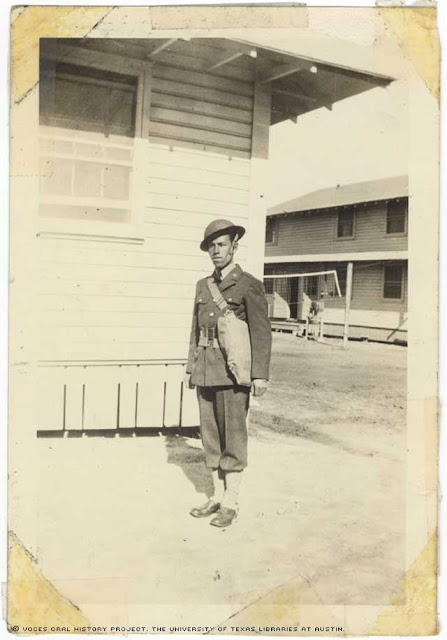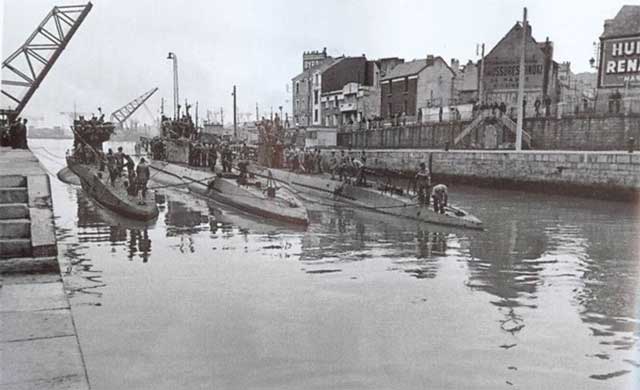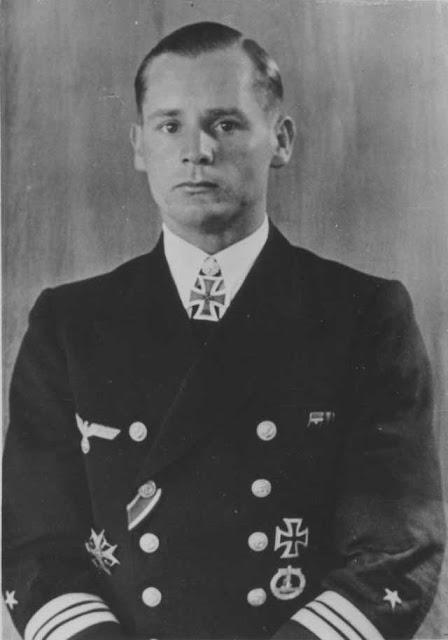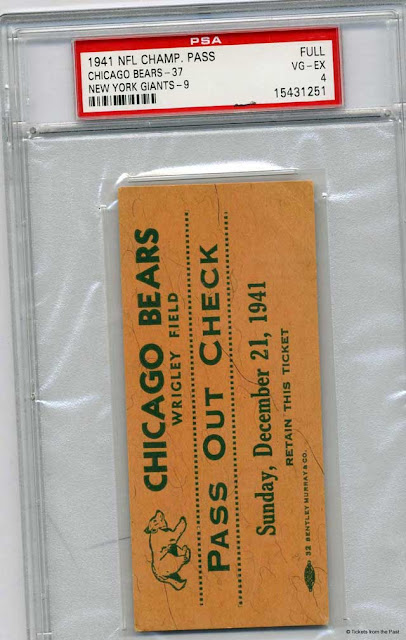Sunday 21 December 1941
 |
| The site of the Bogdanovka massacre, where executions of over 40,000 people were carried out from 21 December 1941 to 9 January 1942 (The National Archives for Photos and Films, Kiev, copy Yad Vashem Archive, Photo Collection 4147/18). |
Battle of the Pacific: About 20 miles off Monterey Bay, California, Japanese Navy submarine I-23 surfaces on
21 December 1941 and fires eight or nine shells at 6771-ton Richfield Oil Company tanker Agwiworld. The captain of the Agwiworld manages to evade the shells using a zigzag pattern and makes it to port.
 |
| As shown in the 21 December 1941 headline of The Courier-Journal of Louisville, Kentucky, the Japanese submarine attacks off the California coast have become a new problem for the US Navy. |
In the Philippines, the Japanese increase their military presence by sending three convoys from Formosa and the Pescadores bearing troops of the 14th Army assault group. The convoys carry 43,110 men of the 48th Division and one regiment of the 16th Division, supported by about 90 light tanks and artillery. They land at three points in Lingayen Gulf on the northeast coast of Luzon during the night of 21/22 December 1941.
 |
| The LA Times for 21 December 1941 headlines the Japanese submarines operating off the California coast. |
The US attempt to counterattack with a few B-17s flying all the way from Australia and also some submarines in the vicinity, but they accomplish nothing. General Wainwright sends the 11th and 71st Divisions of the Philippine Army to launch counterattacks on 22 December. A bit further north at Bacnotan, the Japanese forces that landed earlier advance down the coast and make contact with the Filipino 11th Division. Another Japanese invasion force which left from Taiwan is at sea heading toward Lamon Bay on the eastern shore of Manila, south of Manila. It is obvious to all that the Japanese are heading for Manila, so local naval defense commander Rear Admiral F.W. Rockwell transfers his headquarters to the fortress island of Corregidor.
 |
| Texas soldier Juan Lugo Martinez at Camp Roberts, California, 21 December 1941. He enlisted after Pearl Harbor and entered active service on 10 December 1941. Mr. Martinez survived the war and passed away in 1999. (Voces). |
At Wake Island, the last plane to leave, a PBY-5 Catalina, departs at 07:00. It carries Major Walter J. Bayler of Marine Aircraft Group 21, who comes to be known as the "last man off Wake." Shortly after, at 08:50, Japanese aircraft carriers Hiryu and Soryu launch 29 bombers escorted by 18 Zero fighters to attack the Marines holding out on the island. Around noontime, 33 "Nell" bombers from Roi Aerodrome on Kwajalein, Marshall Islands also attack. Meanwhile, US Navy Task Force 14 is approaching Wake Island from the southeast but is still 600 nautical miles away.
 |
| U-552 - U-567 and U-93 St. Nazaire in September 1941. U-567 is sunk on 21 December 1941 in the North Atlantic north-east of the Azores by Royal Navy sloop HMS Deptford and corvette Samphire. All 47 men aboard perished. |
US Naval Task Force 14 has overwhelming firepower that includes aircraft carriers USS Lexington and Saratoga and heavy cruisers Astoria, Minneapolis, and San Francisco, but nobody knows where the Japanese fleet is and the task force comprises a large fraction of remaining US seapower in the Pacific. Thus, risking it at this stage of the war in an unknown situation concerns Vice Admiral William S. Pye, the temporary commander of the Pacific Fleet. However, at this time Pye allows TF 14 and nearby Task Force 11 (Admiral Frank Fletcher) to continue their attempt to relieve the Marines on Wake.
 |
| U-boat ace Engelbert Endrass, commander of U-567, KIA 21 December 1941. |
On the Malay Peninsula, the Indian 11th Division (Major-General David Murray-Lyon) assumes command over all Commonwealth troops west of the Perak River, including those on the Grik road. The division orders a general withdrawal behind the Perak River. With units widely dispersed across the peninsula in dense jungles, many units do not receive the order or otherwise have great difficulty retreating.
Dutch submarine K XVII runs into the same minefield that claimed fellow Dutch submarine O 16 on 15 December 1942. It hits a mine about 22 miles off the coast of Malaysia's Tioman Island. All 36 men on board perish. The wreck is discovered in 1978 and identified in 1982, being declared a war grave. However, like the wreck of O 16, it since has disappeared, likely due to illegal salvaging operations.
 |
| The Flyin' Jenny (Virginia Dare) comic strip from the Baltimore Sun, 21 December 1941. This strip was the creation of Russell Keaton. |
Eastern Front: The disarray within the Wehrmacht continues on 21 December 1941. In the morning, General Adolf Strass, commander of Ninth Army northwest of Moscow between Kalinin and Staritsa, flies to the Army Group Center headquarters in Smolensk. He pleads with the commander of Army Group Center, Guenther von Kluge, to permit continued withdrawals past Staritsa. His plan is to form a defensive line he dubs the "K-Line" (Koenigsberg Line) on a line including Rzhev, Gzhatsk, Orel, and Kursk. This is the same line that recently deposed army group commander Field Marshal Fedor von Bock had proposed. Kluge denies the request, referring to Hitler's "definitive" order to stand fast at Staritsa. On the other side, Soviet General Leytenant I.I. Maslennikov, Commanding General, 39th Army, deploys two divisions east of Staritsa to join a planned offensive toward Rzhev. Maslennikov also has an additional six divisions in reserve to exploit any initial successes.
 |
| A picture that was taken of a pilot class at the airfield at Sky Harbour, Ontario (Goderich Airport) on 21 December 1941 (Huron County Museum via Flickr). |
Holocaust: At the Bogdanovka, Domanovka, and Acmecetca concentration camps on the Southern Bug river, in the Golta district, Transnistria, the German advisor to the Romanian administration of the district and the Romanian District Commissioner order an
Aktion. They are concerned about sickness at the camps, which are unheated and poorly provisioned. The camps are located about 200 km northeast of Odessa. The Bogdanovka Massacre is the organized execution of more than 40,000 primarily Jewish inmates evacuated from Odessa and Romania that extends to 9 January 1942. The Aktion is carried out by Romanian soldiers, gendarmes, Ukrainian police, civilians from the district, and local ethnic Germans (
Selbstschutz) under the commander of the Ukrainian regular police, Kazachievici, and the Romanian Prefect of the area, Modest Isopescu. Some of the inmates are locked in two stables which are then set afire, while others are executed by the standard practice of forcing them to march to ravines outside of town and shot there. Some others are forced to dig pits in the nearby forest with their bare hands and bury corpses before they, too, are executed.
 |
| This Pass Out Check will get you into the 21 December 1941 NFL Championship Game. |
American Homefront: In the NFL Championship Game held at Wrigley Field in Chicago, the Chicago Bears beat the New York Giants 37-9. The audience is only 13,341, the smallest ever to attend an NFL championship game.
Alaska Territorial Governor Ernest Gruening orders all Alaskan flags to fly at half-mast today in honor of Ketchikan native Navy Ensign Irvin Thompson, 24. Ensign Thompson perished aboard battleship USS Oklahoma during the 7 December 1941 Japanese attack on Pearl Harbor. He was the first Alaskan serviceman casualty of World War II.
 |
| The official game program for the 21 December 1941 NFL Championship Game held at Wrigley Field between the Chicago Bears and the New York Giants. The Bears defeat the Giants, 37-9. |
December 1941December 1, 1941: Hitler Fires von RundstedtDecember 2, 1941: Climb Mount NiitakaDecember 3, 1941: Hints of Trouble in the PacificDecember 4, 1941: Soviets Plan CounteroffensiveDecember 5, 1941: Soviets Counterattack at KalininDecember 6, 1941: Soviet Counterattack at Moscow BroadensDecember 7, 1941: Japan Attacks Pearl HarborDecember 8, 1941: US Enters World War IIDecember 9, 1941: German Retreat At MoscowDecember 10, 1941: HMS Prince of Wales and Repulse SunkDecember 11, 1941: Hitler Declares War on the USDecember 12, 1941: Japanese in BurmaDecember 13, 1941: Battle of Cape BonDecember 14, 1941: Hitler Forbids WithdrawalsDecember 15, 1941: The Liepaja MassacreDecember 16, 1941: Japan Invades BorneoDecember 17, 1941: US Military ShakeupDecember 18, 1941: Hitler Lays Down the LawDecember 19, 1941: Brauchitsch Goes HomeDecember 20, 1941: Flying Tigers in ActionDecember 21, 1941: The Bogdanovka MassacreDecember 22, 1941: Major Japanese Landings North of ManilaDecember 23, 1941: Wake Island Falls to JapanDecember 24, 1941: Atrocities in Hong KongDecember 25, 1941: Japan Takes Hong KongDecember 26, 1941: Soviets Land in the CrimeaDecember 27, 1941: Commandos Raid NorwayDecember 28, 1941: Operation Anthropoid BeginsDecember 29, 1941: Soviet Landings at FeodosiaDecember 30, 1941: Race for BataanDecember 31, 1941: Nimitz in Charge2020




















